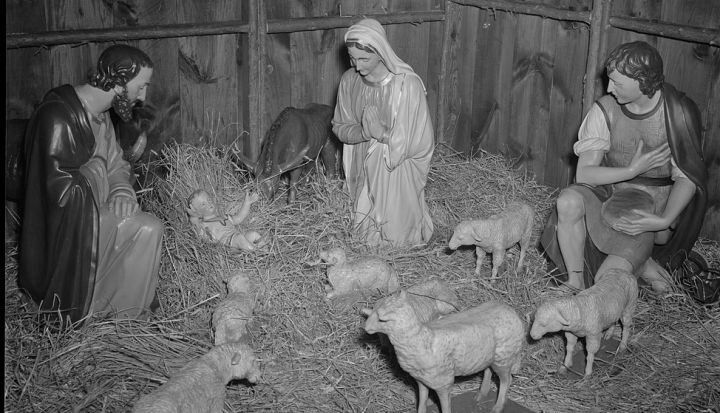On Christmas Eve 1223, St. Francis created the first nativity in the Italian city of Greccio. With the help of a local nobleman, Francis celebrated the birth of Jesus in a cave outside the town. The liturgy featured a hay-filled manger in front of the temporary altar, and as Francis preached, the nobleman arranged to have an ox and a donkey stand at the altar as well.
The Franciscans quickly spread the practice of creating nativity scenes with live animals and actors. Living scenes remained popular, but static nativities also developed, allowing the scene to remain on display for longer periods for meditation.
As the tradition was introduced to new regions throughout the world, nativity scenes adapted to local tastes and customs. Incorporating local elements was especially popular in Francis’ native Italy, where the participants in the scene looked less like biblical figures and more like characters from the local village.
A few years ago, however, there were complaints that this localism had gone too far when a figurine of former Italian prime minister, the scandal-plagued Silvio Berlusconi, appeared in a nativity scene in Naples.
By the 19th century Protestant churches, which initially rejected nativity scenes as a form of idolatrous Catholic superstition, slackened their opposition to the scenes, and their popularity spread through the wider Christian world. Last Christmas, a church in Southampton, England gathered shepherds, angels, and wise men of all sizes in an attempt to break the record for the largest living nativity. At 298 participants, however, they fell well short of the record of 567 people.
Francis’ original nativity was inspired by his trip in 1221 to the Holy Land and Jesus’ traditional birthplace. He was deeply moved visiting the site where God became fully human. Hoping others could enjoy the same profoundly spiritual experience, Francis encouraged believers to make pilgrimages to Bethlehem. By 1223, however, conflict among the powers vying for control of the Holy Land made the trip too dangerous for pilgrims. Francis decided to do the next best thing—bring Bethlehem to the pilgrims.
Accounts of Francis’ original nativity do not include much information about the congregation that gathered. We do not know if the Italian villagers standing in the cold on Christmas Eve nearly eight centuries ago were as moved as Francis was by the idea of an omnipotent God so capable of love and humility that he took the form of a vulnerable infant and was born outdoors among the animals.
The popularity of nativity scenes, however, indicates that over the centuries people were drawn to the possibility of building their own Bethlehem. Setting up a nativity scene not only allows us to remember and celebrate the drama of Jesus’ birth but also the saint so enraptured with that drama that he brought it to life.
This article appeared on the December 2012 issue of U.S. Catholic (Vol. 77, No. 12, page 46).
Have a question you’d like to get answered? Ask us at editors@uscatholic.org!
Image: Flickr photo cc by Boston Public Library













Add comment